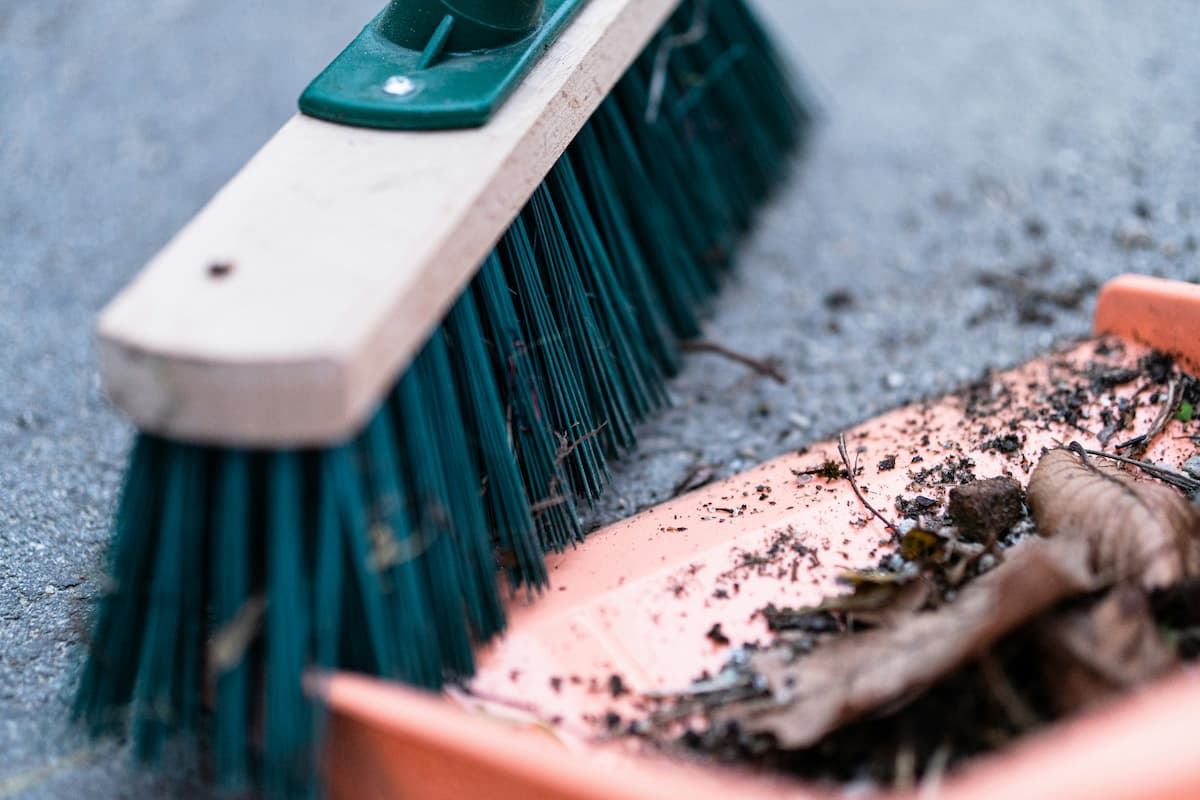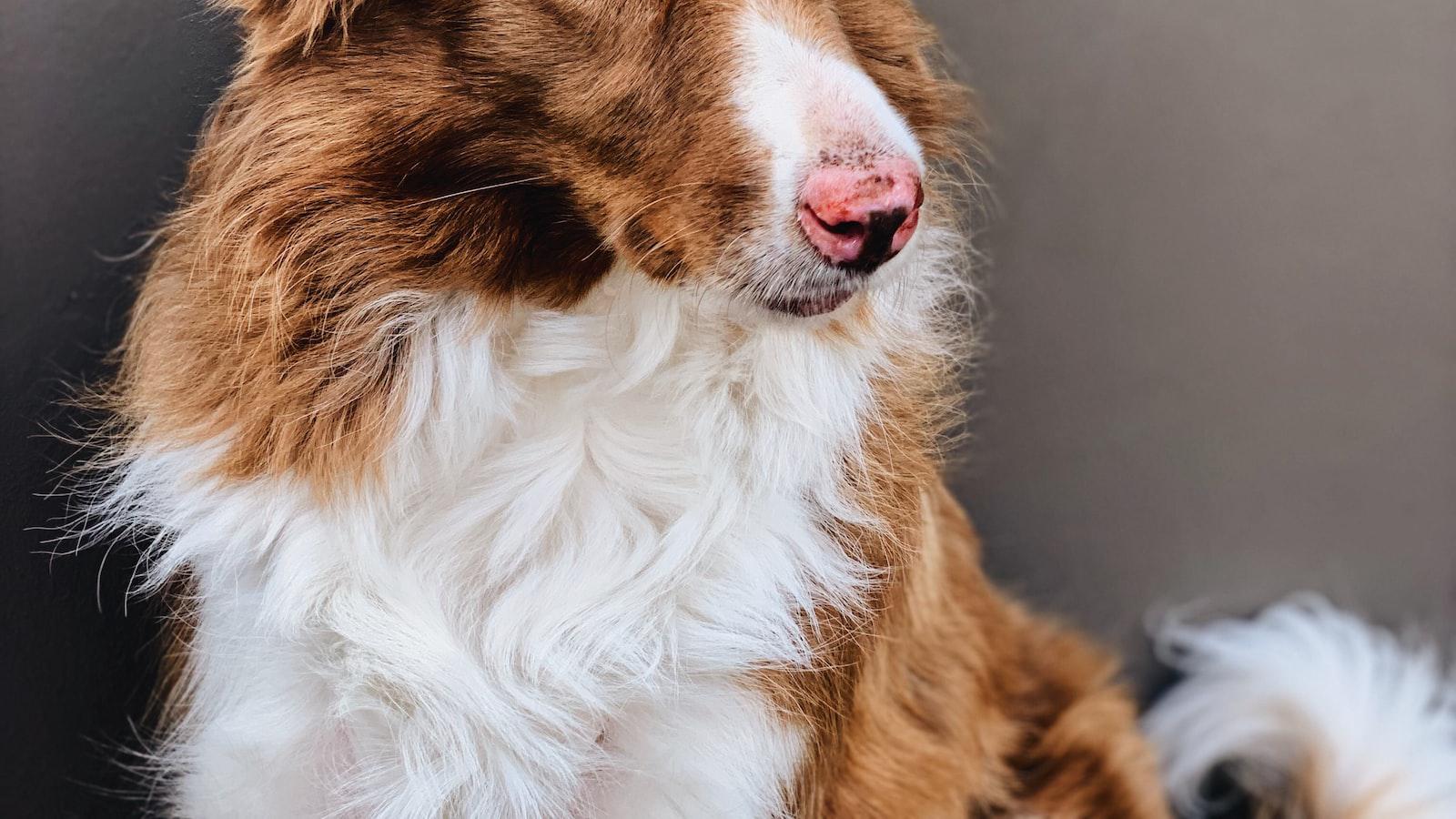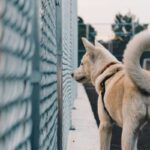Have you ever wondered why dogs go into full-on panic mode at the sight of a broom?
It’s almost as if their adorable doggie brains are convinced that brooms are their arch-nemesis.
Maybe you’ve witnessed the hilarious scene of your furry friend furiously barking, growling, or even trying to eat your trusty cleaning tool.
This article will answer the bizarre question: Why do dogs hate brooms?
Why are Dogs So Terrified of Brooms?
Have you ever wondered why your furry best friend cowers in fear whenever you bring out the broom?
It’s almost like they believe it’s some kind of magical evil wand!
Well, fear not, because I’m here to shed some light on why dogs seem to have an irrational aversion to brooms.
One possible reason for this fear is the sound that the broom makes when it comes into contact with the floor.
Dogs have extremely sensitive hearing, and even the gentle swooshing sound of a broom might be too much for their sensitive ears.
Imagine if someone were to scratch their nails on a chalkboard right next to you – it’s enough to send shivers down your spine, right?
That’s how dogs might feel when they hear the sound of a broom.
Another reason why dogs might be terrified of brooms is their natural instinct to avoid being hit or cornered.
Dogs are highly aware of their environment and any potential threats.
When a broom is being used to sweep, it often involves quick, sweeping motions that can startle or intimidate dogs.
They might associate these movements with aggression or danger, triggering their flight or fight response.
Imagine if a giant monster was threateningly waving something big and strange in your face – you’d want to run away too, wouldn’t you?
Additionally, dogs have a predisposition to be cautious around long, stick-like objects.
This instinct stems from their evolutionary heritage, where similar objects might have represented potential threats like predators or traps.
Consequently, our modern brooms can inadvertently tap into their primal fears, causing unease and nervousness.
Moreover, dogs may hate brooms due to negative experiences.
As intelligent creatures, dogs are capable of making connections between events.
If a dog has had a frightful encounter with a broom, such as being accidentally tripped over or hit, they can develop an intense fear or aversion towards brooms.
This conditioned response is a form of self-preservation, as the dog learns to associate brooms with potential harm.
So, even a harmless sweeping motion can trigger a fear response, sending your pup scurrying for cover.
Signs and Behaviors that Indicate a Dog’s Fear of Brooms
Fear of brooms is a common issue among our canine companions, and it’s important to understand the signs and behaviors that indicate their discomfort.
By recognizing these signs, you can help your beloved pooch overcome their fear and create a more harmonious environment for both of you.
First and foremost, one of the most obvious signs that your dog is afraid of brooms is their body language.
Keep an eye out for these tell-tale behaviors:
1. Cowering or trembling: When a dog is fearful, they may hunch down, tuck their tail between their legs, and shake uncontrollably.
This is their way of trying to make themselves smaller and less noticeable.
2. Avoidance: Dogs who are frightened by brooms may actively try to avoid them.
They might slink away or even hide in another room when they see you pick up a broom.
3. Excessive barking or growling: Some dogs respond to fear with aggression.
If your pup starts barking or growling persistently at the broom, it’s a clear sign that they perceive it as a threat.
Tips and Techniques to Help Your Dog Overcome Broom Fear
Here are some tips and techniques that can help your four-legged friend overcome this phobia.
Understanding the Root Cause: Before we delve into the methods to help your dog conquer their broom fears, it’s essential to understand why dogs may develop this fear in the first place.
Dogs are naturally curious creatures, but they can also be sensitive to unfamiliar objects or loud noises.
The sight of a broom, with its long handle and strange bristles, can be intimidating to them.
Gradual Exposure and Positive Reinforcement: One way to help your dog overcome their fear of brooms is through gradual exposure and positive reinforcement.
Start by placing the broom in a room where your dog spends most of their time.
Allow them to sniff and investigate it at their own pace, rewarding them with treats and praise for any signs of curiosity or calmness.
As your dog becomes more comfortable, try gently touching them with the broom, always offering treats and praise as a reward for any positive behavior.
Repeat these steps over several days until your dog associates the broom with positive experiences.
When Should Dog Owners Consider Seeking a Trainer or Behaviorist?
Many dog owners have experienced the curious phenomenon of their four-legged friends reacting with extreme aversion towards brooms.
It can be quite baffling to witness your beloved pup suddenly transform into a barking, growling tornado of fur at the mere sight of a broom.
While this behavior may seem amusing at first, it can quickly become a nuisance and even pose a safety risk.
So, when should dog owners consider seeking professional help from a trainer or behaviorist?
1. Intense Fear or Aggression
If your dog’s reaction to brooms is not just a playful or curious one, but rather an intense fear or aggression, it’s crucial to seek professional help.
Dogs with phobias or aggressive tendencies can cause harm to themselves, their owners, or others in their environment.
A qualified trainer or behaviorist can assess the root cause of this reaction and help develop a personalized training plan to address the issue.
2. Persistent and Disruptive Behavior
While it’s not uncommon for dogs to exhibit some initial curiosity or hesitation towards brooms, persistent and disruptive behavior should not be ignored.
If your dog repeatedly engages in destructive actions, such as chewing or tearing brooms apart, or if they become highly agitated and uncontrollable in the presence of brooms, it’s time to consider professional assistance.
A trainer or behaviorist can provide guidance on redirecting your dog’s behavior and teaching them appropriate ways to interact with brooms.
3. Impact on Daily Life
If your dog’s fear or aggression towards brooms begins to interfere with your daily life, it’s a clear sign that professional intervention may be necessary.
For example, if cleaning your home becomes a stressful ordeal or if you are unable to sweep without putting yourself or your dog at risk, it’s essential to seek help.
A trainer or behaviorist can equip you with the tools and techniques to manage and modify your dog’s behavior, enabling you to lead a more harmonious and stress-free life.
Build Trust and Create a Positive Environment to Ease Your Dog’s Broom Fear
To help your furry friend overcome their fear, it’s essential to create positive associations with the broom.
Here are some steps you can take to help your four-legged companion overcome their fear and create a more positive environment for them:
Start with gradual exposure: Introduce the broom to your dog in a non-threatening way.
Let them sniff and investigate it at their own pace.
Reward them with treats and praise to associate the broom with positive experiences.
Positive reinforcement: Whenever your dog remains calm in the presence of the broom, reward them instantly with treats and words of encouragement.
This will reinforce positive behavior and reassure them that there is nothing to fear.
Desensitization: Slowly expose your dog to the broom in different scenarios.
Initially, keep it far away or stationary, and gradually increase proximity or movement over time.
Combine this with positive reinforcement to build confidence and trust.
Counterconditioning Techniques: Another effective technique to combat your dog’s fear of brooms is counterconditioning.
This involves pairing the presence of a broom with something that brings your pup joy.
For example, you can play their favorite game or offer them a beloved toy while gradually introducing the broom into the equation.
This way, your dog will start to associate the broom with positive experiences, helping them overcome their fear over time.
Remember, every dog is unique, and it may take time for them to overcome their fear.
Patience and consistency are key.
By creating a positive association, building trust, and gradually introducing the broom, you can help your beloved pet conquer their fear and make sweeping a peaceful and stress-free activity for everyone involved!
FAQ
Q: Is it common for dogs to dislike brooms?
A: You bet!
It’s not unusual to see dogs reacting like they’ve seen a ghost whenever a broom comes into sight.
So, rest assured, your pup isn’t alone in this quirky fear.
Q: What makes brooms so intimidating to dogs?
A: Well, for starters, let’s put ourselves in a dog’s paws.
Brooms are pretty darn odd-looking objects.
With those long, stick-like handles and those fluffy bristles at the end, one can understand why a dog might find them puzzling or threatening.
Imagine if someone suddenly waved a giant, ticklish, and unfamiliar feather duster in your face – you’d probably jump too!
Q: Are there any specific reasons that trigger their fear?
A: Absolutely!
Dogs are incredibly perceptive creatures, and even small cues can set them off.
One possibility is that they associate brooms with previous negative experiences.
For example, if they’ve ever been accidentally poked or prodded by a broom, it could traumatize them and create an association between brooms and pain.
Q: Can their fear also stem from instinctual reasons?
A: It’s very likely!
Dogs are descendants of wolves, so they still retain some of their primal instincts.
In the wild, long, thin objects like brooms might resemble snake-like creatures, which can be dangerous and potentially harmful.
So, it isn’t too far-fetched to think that dogs are hardwired to be wary of such objects.
Q: Can we help dogs overcome their fear of brooms?
A: Absolutely!
The first step is to create positive associations.
Associate the broom with pleasant experiences, such as giving them treats while slowly introducing the broom nearby.
Gradually increase exposure while continuously rewarding their calm behavior.
Patience and consistency are key here!
Q: Are there any alternatives to using a broom around fearful pups?
A: You betcha!
Many dog owners find success with alternative cleaning tools, like handheld vacuums or pet-friendly sweeping cloths.
These options can reduce your pup’s anxiety and replace the broom with something less intimidating.
Plus, you’ll still have a clean house!
Q: In conclusion, what’s the bottom line on this broom phobia?
A: Dogs dislike brooms for various reasons, including their odd appearance, past negative experiences, and instinctual fears.
It’s a common quirk among our canine companions, and with some patience, positive reinforcement, and alternative cleaning tools, we can help our furry friends overcome their fear and keep our homes spick and span!
Final Reflections
From their keen senses and natural instincts to their unique perceptions of movement and territory, dogs possess a rich and fascinating world that often remains hidden to us.
We have learned that the seemingly harmless broom, with its long handle and soft bristles, can become quite a fearsome adversary in the eyes of our furry friends.
Their innate aversion to this common household object can be traced back to their evolutionary past, where they developed an instinctual mistrust of anything resembling a threat or a potential predator.
As we delved deeper into the canine psyche, we discovered that their reaction to brooms is not simply a demonstration of fear or dislike, but rather a complex interplay of emotions.
Dogs may feel anxious, vulnerable, or even territorial when confronted with a broom, triggering a well-practiced survival response that compels them to protect themselves, their loved ones, and their surroundings.
While it may be tempting to dismiss their reactions as irrational or amusing, it is crucial to empathize with our four-legged companions and understand their unique perspectives.
By observing their body language and respecting their boundaries, we can gradually help them overcome their fear and foster a positive association with brooms.
So, dear readers, the next time you witness your furry friend launching a full-scale canine assault on your broom, remember the ancient instincts that drive them.
Approach them with patience, gentleness, and understanding, knowing that their fear is rooted in a shared history of survival.














